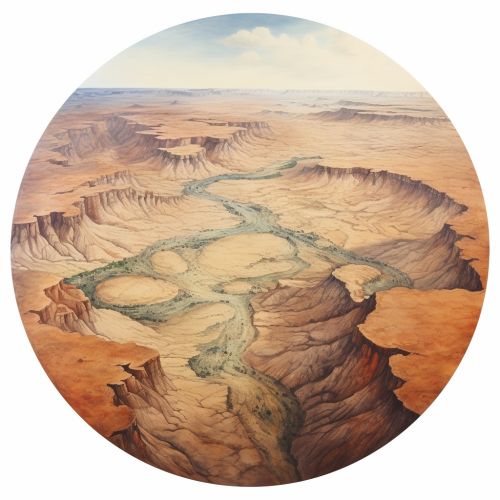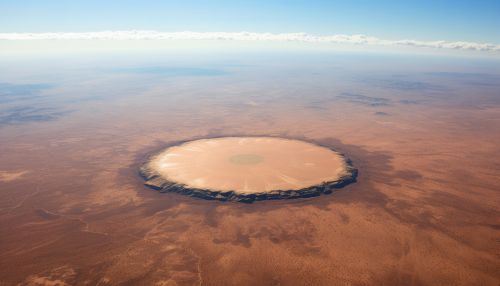Meteor Crater
Introduction
Meteor Crater, also known as the Barringer Crater, is a meteorite impact site located in the northern Arizona desert in the United States. The crater is named after Daniel Moreau Barringer, a Philadelphia businessman who was the first to suggest that it was produced by meteorite impact. The site was formerly known as the Canyon Diablo Crater and fragments of the meteorite are officially classified as the Canyon Diablo Meteorite. Scientists refer to the crater as Barringer Crater in honor of Daniel Barringer, who was the first to suggest that it was produced by meteorite impact.


Formation
The Meteor Crater was formed approximately 50,000 years ago during the Pleistocene epoch when the local climate on the Colorado Plateau was much cooler and damper. A nickel-iron meteorite about 50 meters (160 feet) across, which is about the size of a football field, impacted the flat-lying sedimentary rocks at a speed of several kilometers per second. The result was an explosion equivalent to at least 2.5 megatons of TNT, or about 150 times the yield of the atomic bombs used in World War II. This explosion dug out 175 million tons of rock, forming a crater nearly a mile wide and 570 feet deep.
Geology
The impact of the meteorite caused the underlying strata to be overturned and uplifted, creating the raised rim of the crater. The layers of rock at the crater's rim are stacked in reverse order, with the oldest rocks on top. This is a characteristic feature of large impact craters and is caused by the immense energy of the impact causing the rocks to behave like a fluid for a short period of time. The impact also caused the formation of coesite and stishovite, two high-pressure polymorphs of silica that are only found in shock-metamorphosed rocks.
Discovery and Investigation
The crater was first discovered by European settlers in the 19th century. In 1903, Daniel Barringer, a mining engineer and businessman, became interested in the crater as a potential source of iron. Barringer formed the Standard Iron Company and filed several mining claims in the area. He proposed that the crater was the result of a meteorite impact, a theory that was met with skepticism by the scientific community at the time.
In the 1920s, Barringer's theory began to gain acceptance. Studies of the crater by geologist Eugene Shoemaker in the 1960s confirmed that it was indeed the result of a meteorite impact. Shoemaker's work at Meteor Crater was the first to prove conclusively that an impact event could cause a crater of this size.
Tourism
Today, Meteor Crater is a popular tourist destination. The site is privately owned by the Barringer family through their Barringer Crater Company, which proclaims it to be the "best preserved meteorite crater on Earth". A visitor center on the north rim features interactive exhibits and displays about meteorites and asteroids, a movie theater, a gift shop, and an observation deck with telescopes.
